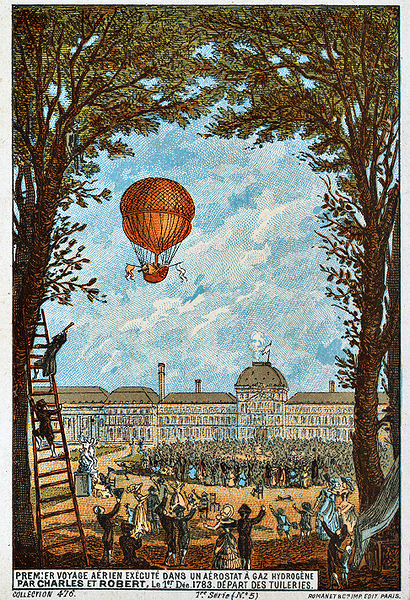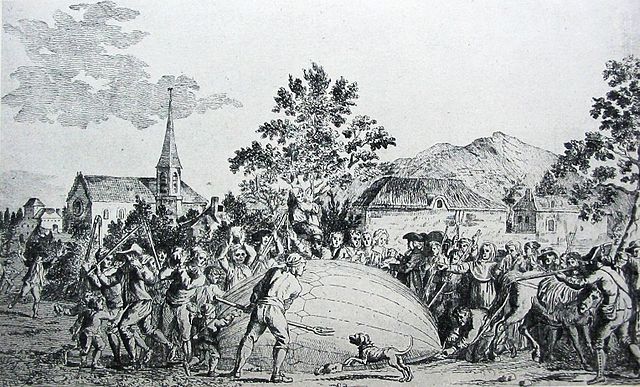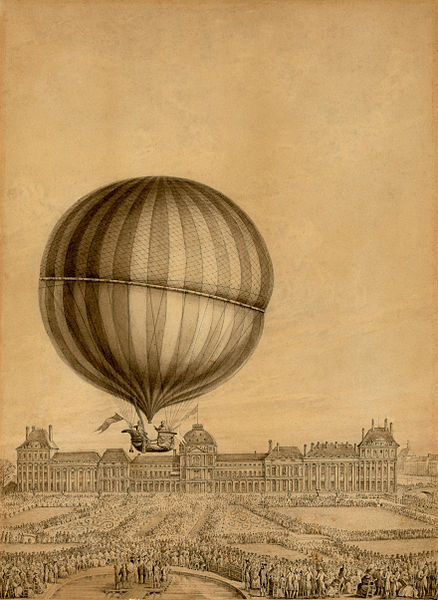A gas balloon is a balloon that rises and floats in the air because it is filled with a gas lighter than air. When not in flight, it is tethered to prevent it from flying away and is sealed at the bottom to prevent the escape of gas. A gas balloon may also be called a Charlière for its inventor, the Frenchman Jacques Charles. Today, familiar gas balloons include large blimps and small latex party balloons. For nearly 200 years, well into the 20th century, manned balloon flight utilized gas balloons before hot-air balloons became dominant. Without power, heat or fuel, untethered flights of gas balloons depended on the skill of the pilot. Gas balloons have greater lift for a given volume, so they do not need to be so large, and they can stay up for much longer than hot air balloons.
The first launch of a gas balloon by Jacques Charles and Les Frères Robert, 27 August 1783, at the Champ de Mars, Paris. Illustration from the late 19th century.
Les Frères Robert were two French brothers. Anne-Jean Robert (1758–1820) and Nicolas-Louis Robert (1760–1820) were the engineers who built the world's first hydrogen balloon for professor Jacques Charles, which flew from central Paris on 27 August 1783. They went on to build the world's first manned hydrogen balloon, and on 1 December 1783 Nicolas-Louis accompanied Jacques Charles on a 2-hour, 5-minute flight. Their barometer and thermometer made it the first balloon flight to provide meteorological measurements of the atmosphere above the Earth's surface.
The world's first manned hydrogen balloon flight. 1783
The balloon built by Jacques Charles and the Robert brothers is attacked by terrified villagers in Gonesse.
Contemporary illustration of the first flight by Prof. Jacques Charles with Nicolas-Louis Robert, 1 December 1783. Viewed from the Place de la Concorde to the Tuileries Palace (destroyed in 1871)
Meusnier's dirigible





